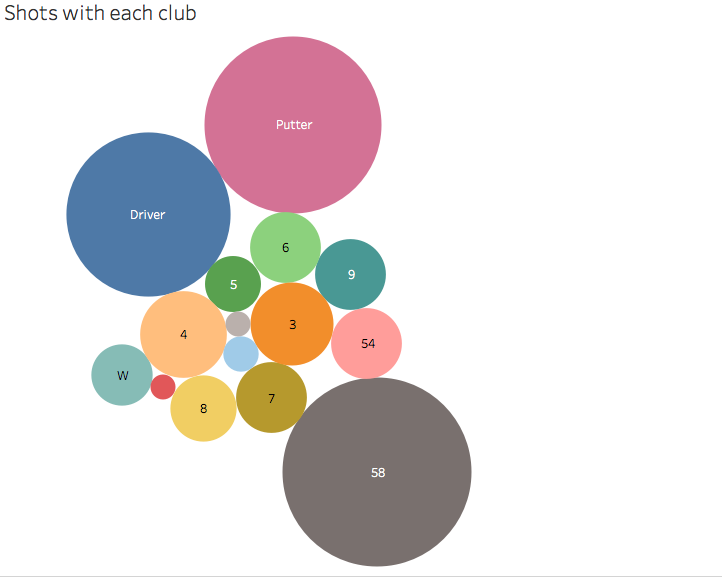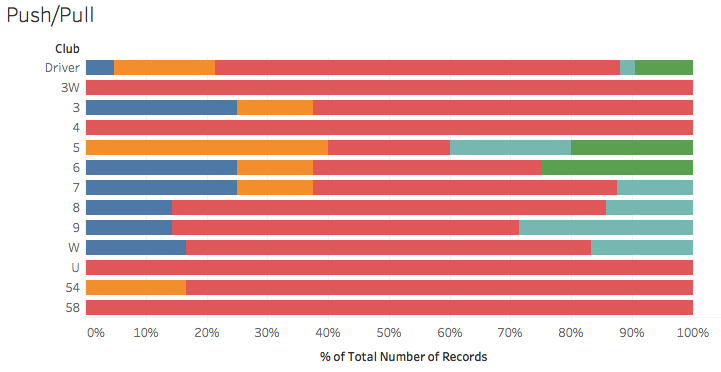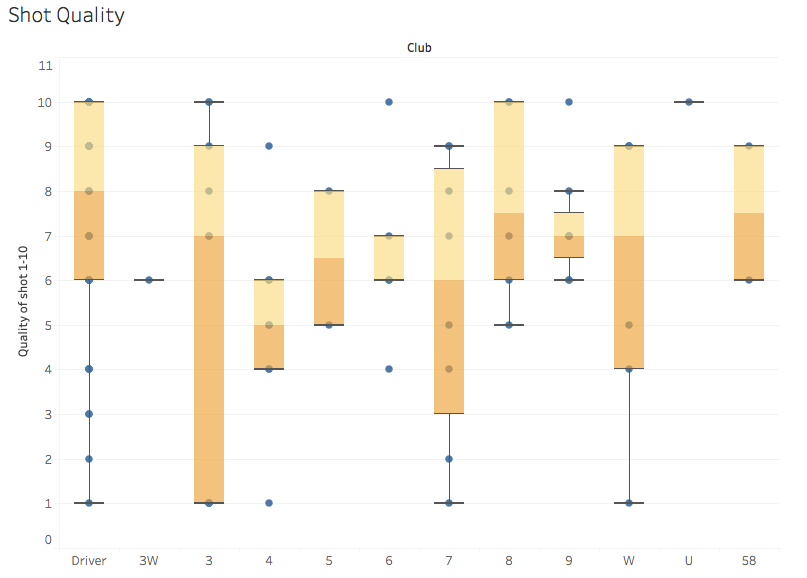As you know, I recently started a year long journey practicing and playing golf. I wanted to give myself the best shot at making big strides in a short period of time so I adopted a data-driven approach to improving my overall game. While this post is specific to improving my golf game, the approach can help improve anything. The three fundamental components are:
- Understand what to focus on to maximize impact
- Track current results/mistakes so you can make adjustments
- Get the right help so you get the experience/knowledge of an expert
Understanding what to focus on
No matter what you do, it’s important to have data so you can perform some kind of analysis. If you’re a manufacturer it might be how long each step of the process is. If you’re in client services it might be ROI. It could be calculated by how much money you earn compared to how much time you spend on each client. You would see how valuable each client is on a per hour basis and could make adjustments to how you spend your time.
I wanted to figure out what part of my game I should focus on so I started keeping detailed notes of each shot. I tracked the club, distance, quality of shot, if it went left or right, etc. After each round I entered the data into a spreadsheet. This is what my typical scorecard looked like.

After just a few rounds I had some actionable data. The most eye-opening visual I created showed how often I use each club in my bag.

Everyone says the short game is the most important part of golf. I, like most others, was spending most of my time taking full swings on the range. This visualization had an immediate impact. I only practiced pitching, chipping, and putting for a few weeks. That small amount of focused practice drastically improved my short game, and I’ve seen the results on my scorecard.
Tracking mistakes to improve
Hypothetically, let’s say your subordinate comes over and says “I’m sorry, I just can’t get this right. I keep messing up.” You might say something like “let’s take a look,” and start to diagnose what’s wrong. The important thing is that it helps to know how you’re messing up, so you can figure out what to adjust.
In golf, some common “mistakes” are hooking and slicing, and pushing and pulling the ball. All of these are caused by different “mistakes” and knowing how you mess up makes it easier to make the right adjustments.
It’s clear from the charts below that my typical mistake is a hook/draw (these were measured compared to my attempted ball flight. So if I tried to draw the ball and it drew the amount I wanted, I marked it down as straight).


Getting the right help
Golf, like many other things, is very nuanced and technical. It’s important to get the right help so you know that the changes you make are actually going to cause improvements. This is consulting, and I like to view any lessons, coaching, training, or service as such. A consultant works with you. The answer is not one-size-fits-all, and the consultant is there to be your expert. Doctors, lawyers, personal trainers. They all should have recommendations and a plan catered to your needs.
From the charts above and below, you can see that my shot quality was not consistent, so I asked around and got a few recommendations for coaches. One stood out and I’m currently working with him. We’ve been working specifically on not hooking the ball and having a lower trajectory, both of which will help my game. Hopefully I can post a new and improved chart in a few weeks!

One last chart
This last chart shows one reason why I chose golf for this journey. A lot of sports these days require you to be a physical specimen who has genetic gifts. Read The Sports Gene: Inside the Science of Extraordinary Athletic Performance if you’re interested in going into more detail (thanks for the rec, Shane!). In golf you just need to hit the ball straight and the correct distance. The one physical benefit you can have is hitting the ball far. That I can do.

Key Takeaways
If you want to get better at something, merely putting in hours is not the best approach. Get whatever data you can, do some analysis, and see what you can improve, and how you can improve.
“Practice does not make perfect. Only perfect practice makes perfect” – Vince Lombardi
Focusing on where and how to improve will help you have the best value impact with your time and money. This, with the help of an expert, is a great approach for getting better at anything.
Please feel free to comment or email me at rosenbergmaxa@gmail.com if you have any questions or want help collecting data and doing your own analysis, even if it’s something completely different than golf!

